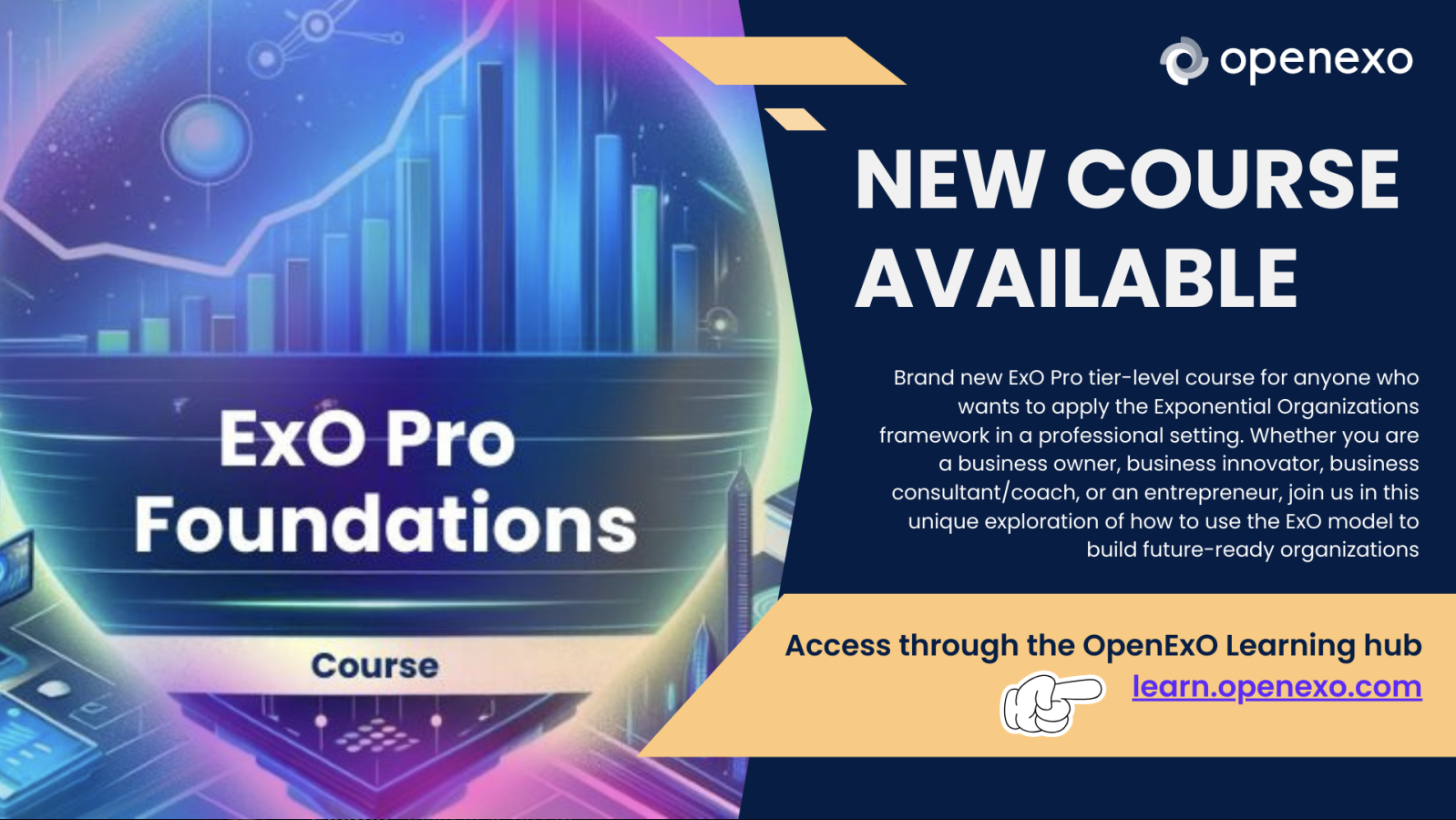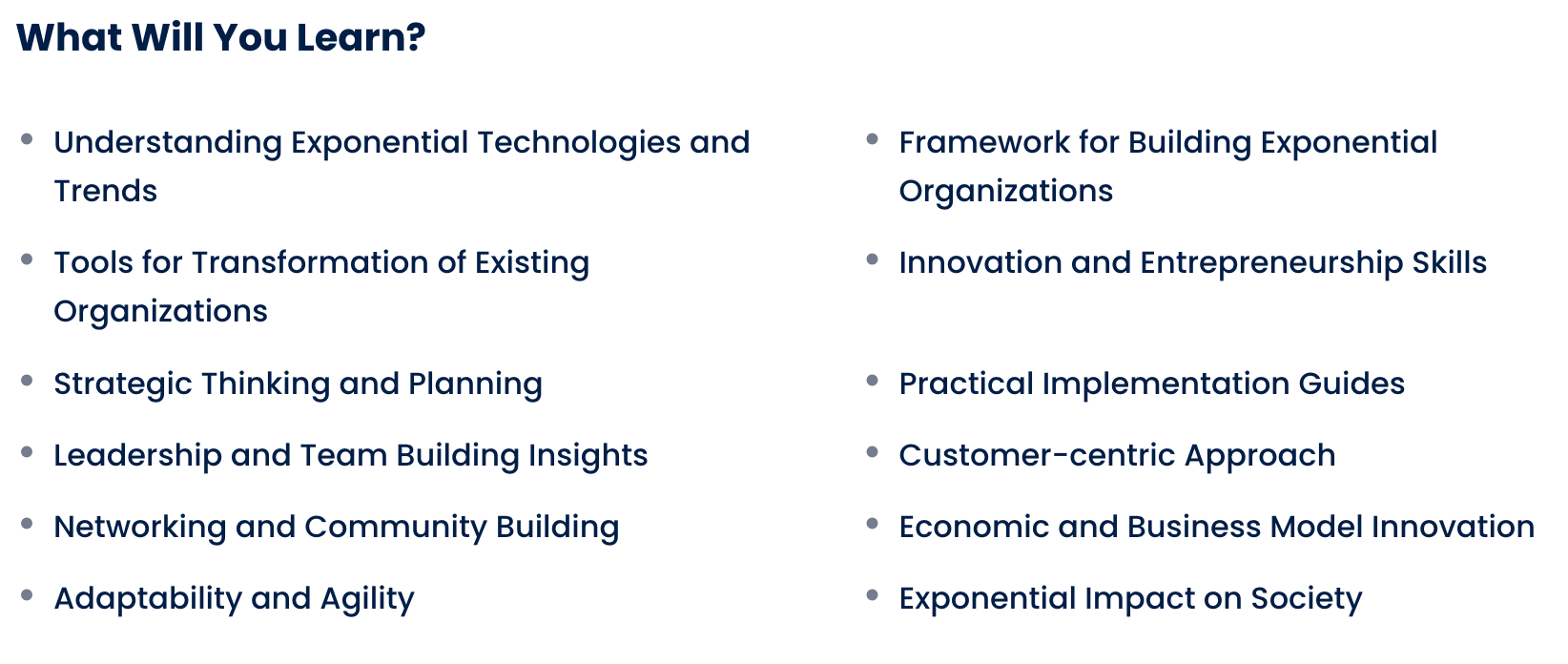
Disruptive Potential: How Exponential Attributes Are Transforming Education #4
Engagement transcends the traditional boundaries of passive learning and embraces a paradigm shift towards active participation, immersion, and co-creation.
Welcome to the middle step of your journey towards exponential education transformation, where we explore the power of Engagement.
In the previous articles, we delved into the transformative roles of Staff on Demand, Community & Crowd, Algorithms, and Leveraged Assets. Now, it’s time to unveil the ultimate catalyst that binds these elements together – Engagement.
In the context of education, Engagement transcends the traditional boundaries of passive learning and embraces a paradigm shift towards active participation, immersion, and co-creation. By harnessing the power of technology, gamification, and human-centric design, educational institutions can foster environments that captivate learners, ignite their curiosity, and empower them to take ownership of their educational journeys.
Engagement is the driving force behind personalized learning experiences, where students become active agents in shaping their own paths, collaborating with peers, and co-creating knowledge. It’s about creating learning ecosystems that resonate with the unique needs, interests, and learning styles of each individual, ensuring that education is not a one-size-fits-all endeavor but a tailored, dynamic, and inclusive experience.
Engagement: The Catalyst for Transformative Learning Experiences
In the rapidly evolving landscape of education, engagement has emerged as a powerful catalyst, propelling learners towards transformative experiences that transcend traditional boundaries. By fostering active participation, immersion, and co-creation, engagement ignites a passion for learning, cultivating environments where students become architects of their own educational journeys.
The benefits of heightened engagement in education are manifold. Engaged learners exhibit increased motivation, retention, and academic performance, as they actively participate in the learning process rather than passively consuming information. Engagement fosters critical thinking, problem-solving skills, and a deeper understanding of complex concepts, equipping students with the essential tools for success in an ever-changing world.
Moreover, engagement promotes a sense of belonging and community, fostering collaborative learning experiences where students can share diverse perspectives, co-create knowledge, and develop invaluable interpersonal and teamwork skills.
Real-World Examples of Engagement in Education:
- Gamification: Classcraft – This innovative platform transforms classrooms into immersive role-playing adventures, where students assume character roles, embark on quests, and earn experience points by completing assignments and participating in class activities. Gamification elements like progress tracking, rewards, and friendly competition enhance engagement and motivation. Link to Classcraft.
- Immersive Learning: Labster – Leveraging virtual reality (VR) and augmented reality (AR) technologies, Labster provides students with simulated laboratory experiences, enabling them to conduct experiments, manipulate variables, and observe real-time results in engaging, interactive environments. Link to Labster.
- Collaborative Learning: Google Workspace – Online collaborative tools like Google Workspace foster engagement through meaningful discussions, idea exchanges, and co-creation of projects. Students engage in constructive discourse, share perspectives, and collectively build knowledge, fostering a sense of community and accountability. Link to Google Workspace for Education.
- Personalized Learning Pathways: Knewton Alta – This adaptive learning platform employs algorithms and data analytics to tailor content, pacing, and instructional approaches based on individual learners’ strengths, weaknesses, and progress. By providing personalized learning experiences, Knewton ensures that students remain engaged by addressing their unique needs and learning styles. Likn to Knewton Alta.
As educational institutions embrace the transformative power of engagement, they unlock a world of possibilities where learning becomes an immersive, captivating, and personalized experience. By integrating gamification, immersive technologies, collaborative learning, and personalized pathways, educators can cultivate environments that inspire learners to become active participants in their own growth, co-creators of knowledge, and lifelong explorers of the boundless realms of education.
Gamification: Unleashing the Power of Play
Talking about the engagement attribute, we cannot avoid discussing gamification, and we have already done so when we introduced Classcraft.
Gamification, the integration of game-like elements into non-game contexts, has proven to be a potent tool for fostering engagement in education. By tapping into the inherent human desire for achievement, competition, and rewards, gamified learning experiences can transform traditionally passive processes into interactive, engaging, and motivating endeavors.
The benefits of gamification in education are substantial. Gamified approaches enhance learner motivation, increase retention rates, and promote active participation. By incorporating elements such as progress tracking, experience points, leaderboards, and virtual rewards, gamification taps into the psychological drivers that make games addictive and enjoyable, translating these principles into educational settings.
Real-World Examples of Gamification in Education:
- Duolingo – This language-learning platform seamlessly blends gamification with educational content. Through bite-sized lessons, progress tracking, experience points, and virtual rewards, Duolingo incentivizes learners to engage consistently, fostering a sense of accomplishment and making language acquisition an enjoyable and addictive experience. Link to Duolingo.
- Kahoot! – This game-based learning platform allows educators to create interactive quizzes, polls, and learning games. Students engage in friendly competition, answering questions on their devices while earning points and climbing leaderboards. Kahoot! transforms traditional assessments into engaging, gamified experiences. Link to Kahoot!.
- ClassDojo – This classroom management tool employs gamification elements to promote positive behavior and engagement. Students earn virtual badges and rewards for demonstrating desired behaviors, such as participation, perseverance, and teamwork. ClassDojo creates a positive feedback loop, reinforcing desirable conduct while fostering a sense of accomplishment and motivation. Link to Class Dojo.
By leveraging the power of gamification, educational institutions can tap into the innate human desire for play, competition, and achievement, transforming learning into an engaging, immersive, and rewarding experience. Gamified approaches not only captivate learners but also promote active participation, skill development, and a lifelong love for learning.
More examples
- Quizlet – Quizlet is a study tool that uses gamification to help students learn and retain information through flashcards, quizzes, and games. By turning studying into a game, Quizlet makes learning more interactive, engaging, and effective for students of all ages. Link to Quizlet
- CodeCombat – CodeCombat is a coding game that teaches programming concepts through interactive gameplay. By gamifying the coding experience, CodeCombat makes learning to code fun, challenging, and rewarding for students, helping them develop essential coding skills in a playful and engaging way. Link to CodeCombat
- Prodigy – Prodigy is a math learning platform for students that gamifies the learning process by turning math practice into an interactive game. By engaging students in math challenges, quests, and battles, Prodigy makes learning math fun, engaging, and rewarding, helping students build confidence and proficiency in math concepts. Link to Prodigy
- Minecraft: Education Edition – Minecraft: Education Edition is a game-based learning platform that allows educators to create immersive and interactive lessons using the popular game Minecraft. By incorporating game-based learning experiences, Minecraft: Education Edition promotes creativity, collaboration, and problem-solving skills among students, making learning more engaging and enjoyable. Link to Minecraft: Education Edition
- GoNoodle – GoNoodle is a platform that uses interactive games and activities to promote movement and physical activity among students. By gamifying exercise and incorporating fun challenges, GoNoodle helps students stay active, engaged, and focused throughout the school day. Link to GoNoodle
- BrainPOP – BrainPOP is an educational platform that offers animated videos, quizzes, and games to help students learn a variety of subjects. By gamifying the learning process and providing interactive content, BrainPOP makes complex topics more accessible, engaging, and enjoyable for students of all ages. Link to BrainPOP
- Quizizz – Quizizz is a quiz platform that turns learning into a game by allowing students to compete in live multiplayer quizzes. By gamifying the assessment process and adding elements of competition, Quizizz makes studying and reviewing material more engaging, interactive, and enjoyable for students. Link to Quizizz


ExO Insight Newsletter
Join the newsletter to receive the latest updates in your inbox.








